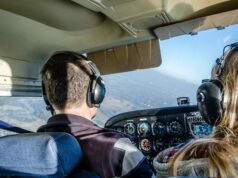
Weather radar is an outstanding tool for pilots, both during preflight stages and during flight. Air traffic controllers may also utilize weather radar to provide guidance to pilots flying within their airspace. Center controller radar displays have limitations to their use, such us the inability to report areas of “light” weather-radar echoes. On the other hand, terminal approach controllers can and do display light intensities. Pilots should remember that turbulence can be present in areas where ATC does not display precipitation at all. It is imperative to always exercise care when transiting areas of known or suspected convective activity.
Pilots are trained to avoid areas of convective activity due to their rapid growth potential. The following steps can be taken to safely navigate when thunderstorms are disturbing our original planned route:
- Advise ATC of a deviation as promptly as feasible.
- Are you receiving the assistance from ATC you need?
- Be aware of ATC’s radar limitations.
- If deviating, consider fuel reserves and alternative plans. Expand the team and maintain situational awareness.
- When reporting to a new controller, advise your intentions and current heading.
- Ask for PIREPs.
- Know how to operate your aircraft’s radar, such as tilt and gain. Different modes may offer different views.
- Consider a different altitude if performance allows.
Be aware of proper ATC terminology when listening for radar return intensities. The only FAA approved intensity descriptors are: light, moderate, heavy and extreme. You may also hear the controller include the diameter of the area of precipitation in nautical miles. Pilots of light general aviation aircraft should even approach areas of “light” precipitation with vigilance. Those areas can rapidly transform into greater intensities under proper atmospheric conditions. Make plans early and always err on the side of caution. Finally, query ATC for PIREPs as you gather more information about the flight conditions ahead. Creating a plan requires that you expand your team and obtain as much information as possible. These reports are only a source of real-time conditions obtained from other aircraft. For those who have never submitted a PIREP, the Aeronautical Information Manual (AIM) explains how to submit one, the uses of a PIREP, and the format a pilot should use in reporting information. Fly safe!



















































